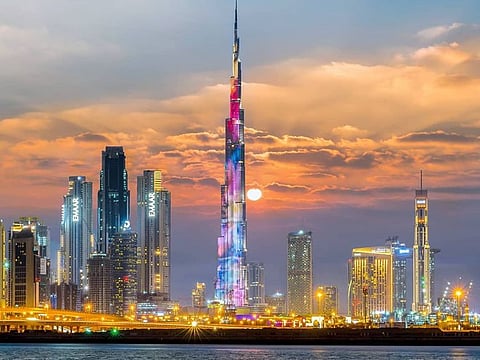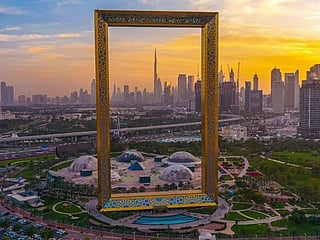Why the UAE builds for the future
The country has built communication networks and roads with the highest specifications

During the past 50 years, the economy of the UAE has grown exponentially from humble beginnings to the third-largest in the Arab world. Between 1990 and 2020, the size of economy grew 800%, from 50 billion dollars to 420 billion dollars. Over the same time, the population increased 200% from 3 million people to 9.7 million.
So how was the UAE’s infrastructure able to meet the needs of this spectacular economic growth, and the population increase that was associated with it?
To answer the question, let’s take two examples, one federal and one local, of the development of infrastructure in the telecommunications and transportation sectors.
Etisalat’s success story
The first example is a telecom company, of which the UAE government owns 60 per cent, represented by the Emirates Investment Authority. In the 1980s, Etisalat started extending a fibre-optic network to connect all the emirates of the country, opening new horizons in communication technology, as it became possible to transfer data at speeds and volumes that were not available before.
During my years at Etisalat, delegations representing governments and telecommunications companies from many countries visited us to witness the experience of the UAE in building this network. We were often told, “Your economy and the population of your country do not justify building these networks. Why do you need that?” We used to repeat the same answer: “We are building for the future.”
One of the most important criteria for evaluating the quality of communications networks is the so-called FTTH, or Fibre To The Home, which is the percentage of homes that are connected to the fibre-optic network.
In the UAE, the ratio exceeds 95% and is among the highest in the world, which means that almost all residents have this large gateway throughout the country, which allows them to communicate and interact with the world around them with virtually no bottlenecks. The speed, ubiquity, and robustness of the UAE’s telecommunications infrastructure has us ranked first in the Arab world and seventh globally.
However, Etisalat was not satisfied with simply linking the emirates of the country. It established a company specialised in laying marine cables, E-Marine, 30 years ago. The company now owns six ships especially designed to lay fibre-optic cables between countries. These cables have become a major point of communication and data transmission between the UAE and the rest of the world.
Dubai’s RTA
The second example is the Roads and Transport Authority in Dubai, which is a local authority. I had the opportunity twice to learn about the achievements of the RTA during the InnoTrans exhibition in Berlin, which is the world’s largest international trade fair for transport technology.
RTA presented an impressive display to the public and to specialists, and after the exhibition ended, we at the State Embassy in Berlin presented these achievements as part of the embassy’s activities.
One of the most prominent achievements of the RTA is the Dubai Metro, which recently completed 12 years since its first trip, and carries over 200 million passengers a year. Total passenger numbers across all public transportation operated by the RTA in Dubai topped 594 million in 2019, or more than 1.6 million passengers daily.
But the supreme achievement of the authority is related to people’s lives. The quality of the roads, the diversity of means of transportation and the technology used resulted in reducing the number of deaths resulting from road accidents by 80 per cent. In 2006, the number of deaths was 22 deaths per 100,000 people, but now the number is just 3.14.
Why the UAE?
Our ability to provide these services with this quality to millions of people within a short period is evidence of our success in building communications networks and roads with the highest specifications. In addition to the contribution this infrastructure makes to the growth of the local economy and raising the standard of living, it is also one of the main factors for attracting foreign investment.
And if an investor asks: why the UAE?, We will tell them where we were, and explain where we are going, with little need to speak about the present — because it speaks for itself.
Ali Al Ahmad is a UAE diplomat. He has served as the UAE ambassador to France and Germany.
Sign up for the Daily Briefing
Get the latest news and updates straight to your inbox






